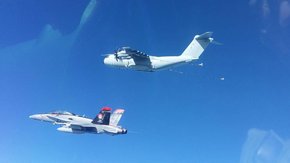t68
Well-Known Member
I believe this is the make or break deal for Airbus, the product on paper ticks all the boxes that even a future USAF even desire. But there appears to be systematic problems within Airbus hierarchy in the defence & space division, I just cant put my finger on if it under estimation of the time needed or funds needed within R&D and an expectation the customers will pick up the slack or a combination of all three and a rush for production sales without a fully tested product across a majority of aircraft programs.An opinion piece from Flight Global on the A400’s future.
OPINION: Can contract revision rescue A400M?
I believe the A400M is a good product overall just not a very well managed one


